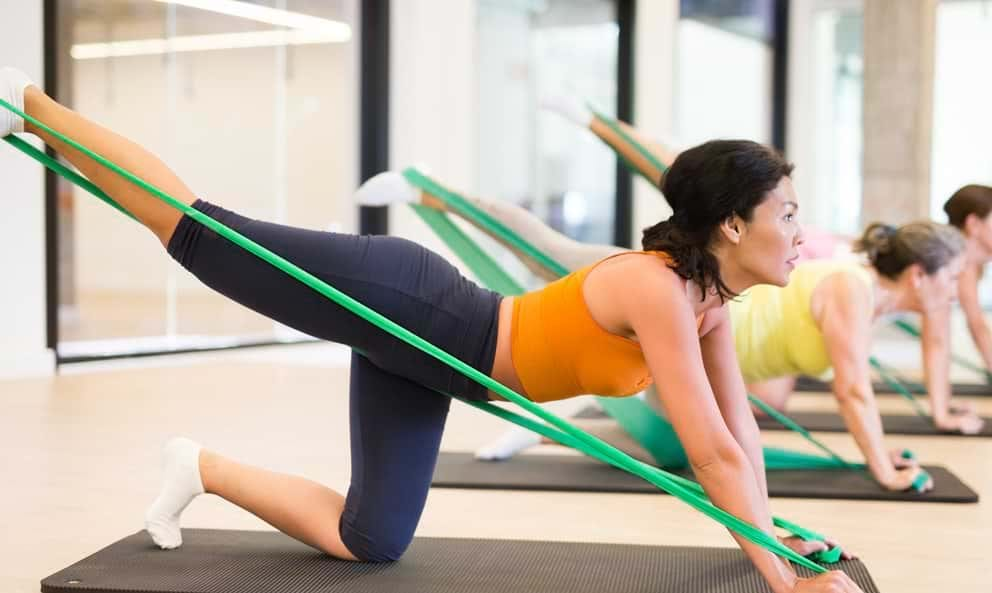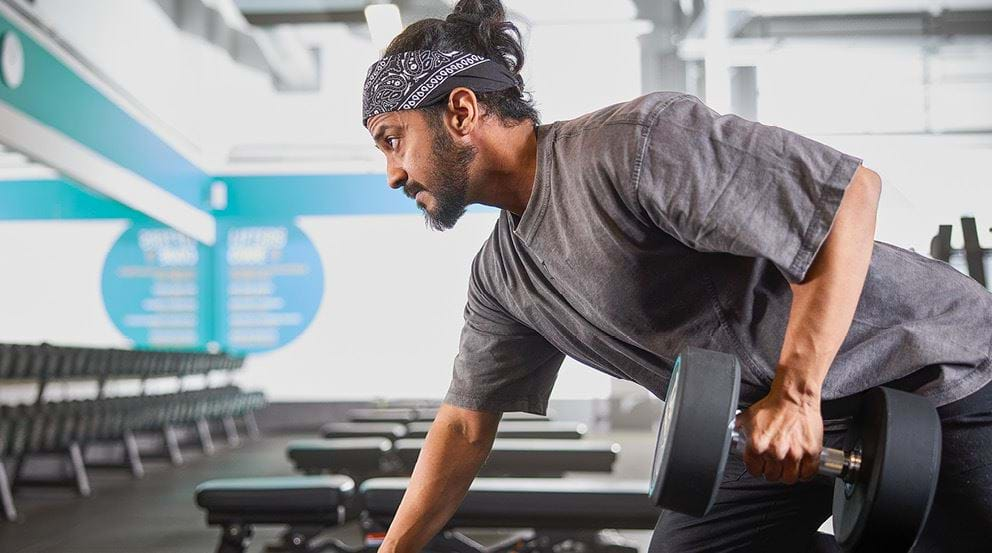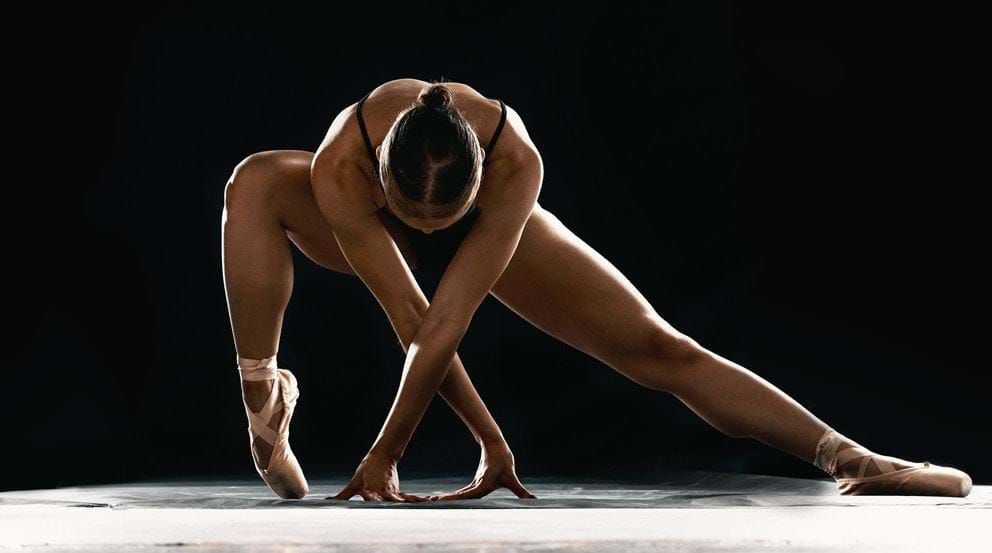Pilates vs Weight Training: Which is Best?

Pilates | Weight Training | Best for Fitness | Best for Strength | Best for Toning | Better Together
Pilates and weight training are two very different approaches to strength training, and both offer fantastic benefits for health and wellbeing. While it's well known that strength training builds strength, it offers a huge list of additional benefits including increased bone density, improved mood, lower risk of injury, better mobility... the list goes on.
Pilates has been around for years, but has recently regained popularity. If you're limited on time, or are fitness beginner and are wondering whether to commit your time to Pilates or weight training, then you may be wondering which is the best exercise form to go for. Here, Personal Trainer and Pilates specialist Gemma O'Hare answers some of the most frequently asked questions from people choosing between the two.
What is Pilates?
Pilates is a strength and flexibility-building form of exercise that focuses on controlled movements to increase mobility, improve posture, and strengthen muscles. It's often compared to yoga but has some key differences, including a real focus on the core and abs area and a different approach to breathing techniques. Check out our guide to the difference between yoga and Pilates for a full breakdown.
Some of the benefits of Pilates including increasing the range of motion in your joints, building stronger more resilient muscles, improving flexibility and mobility, and easing the effects of Delayed Onset Muscle Soreness (DOMS). Pilates also helps to increase spinal mobility by moving the spine in all planes of movement like flexion, extension, lateral and rotation. Being able to move your spine in all directions and ranges of movement is important to maintain and improve mobility throughout your life.
What is weight training?
As the name suggests, weight training is any workout that incorporates additional weight, whether that's handheld weights like dumbbells or kettlebells, larger items like a medicine ball, barbell or weight sledge, or resistance machines such as the chest press or hamstring curl. These types of exercises are typically for the purpose of boosting strength, building muscle and improving posture.
You can learn more about the benefits of weight training here.
Is Pilates or weight training better for keeping fit?
Both Pilates and weight training can help to improve your fitness, however which one is best depends on your definition of fitness.
If you simply want to keep your body moving and feeling healthy, either is good. If your definition of fit involves lifting heavy weights and muscle hypertrophy, weight training will be better for reaching these goals. If mobility and improved functionality and core strength is a bigger aim, Pilates is better.
Although both types of training can work your cardiovascular system and burn calories to some degree, activities like running, HIIT, and cycling, are better for this type of fitness -- so if your idea of fitness looks like increased heart rate and a lot of sweat, you'll want to look at cardio exercise.
Is Pilates or weight training better for building strength?
Both Pilates and weight training build strength, but which exercise is better will depend on your goal. Weight training is more effective if you want to lift heavy weights and increase muscle mass. However, not all strength gained in the gym translates to strength in real life.
Pilates is not as effective for muscle hypertrophy, but is amazing for building core strength, and strength in the end range of movements, which helps to prevent against injuries.
An example of how the different types of strength can look is someone who lifts weights might be able to squat 200kg, but are unable to do many reps of a side lying leg extension, while someone who does Pilates may not be able to lift heavy weights but can hold isometric moves much longer.
Which is better for toning: Pilates or weight training?
If your goal is to have a toned appearance, both Pilates and weight training can help. Being 'toned' refers to the muscles being visible, which involves having muscle without much fat on top of it. Both Pilates and weight training can build muscle and contribute to being toned, so choose the one you enjoy the most and will stick with!
Can I do Pilates and weight training together?
Absolutely, the two types of training can work really well together if you like to vary your workouts.
If you're new to exercise or returning to exercise after injury, Pilates is a perfect place to start. It is a low-impact, mainly bodyweight exercise that can increase proprioception (your body's ability to tell where your body is in space). This can increase your confidence when beginning strength training as having a good mind-body connection will improve your form. I often think that Pilates is a gateway to more movement.
If you are established in weight training already, Pilates will help you in your strength building or hypertrophy training because you will be able to connect with the muscles that you're training in a deeper way. The better mind-body connection that you have, the more you will be able to strengthen the muscles you are trying to target. Pilates is the perfect complement to strength and hypertrophy training.
I think the secret sauce in any training programme is to do both. Lift as heavy as you can and add some Pilates to maintain mobility and promote recovery on rest days.
What's a good Pilates and weight training schedule?
Pilates can be a perfect complement to any training regime. Rest days are a vital part of any weight training program, giving your body time to heal and your muscles time to build (learn more about rest days here). These rest days are the perfect time to incorporate Pilates into your schedule, as you can stay active without overstressing your body. Below are some example of how to work it into your weight training programme.
Example workout schedule 1
Day 1 - upper body weight training
Day 2 - lower body weight training
Day 3 - full body weight training
Day 4 - Pilates
Day 5 - upper body weight training
Day 6 - lower body weight training
Day 7 - rest
Example workout schedule 2
Day 1 - push day weight training
Day 2 - pull day weight training
Day 3 - leg day weight training
Day 4 - rest
Day 5 - push day weight training
Day 6 - pull day weight training
Day 7 - Pilates
If you prefer Pilates over weight training, you could up the Pilates workouts to 2-3x a week and compliment this with 2-3 full body weight training workouts. You could also switch it up and add some HIIT Pilates workouts into your routine.
If you're interested in starting your own fitness routine, then you'll find all the key weight training equipment you could need at your local PureGym. Not just that, many of our gyms also offer Pilates classes, so you can try both to see which you prefer, or do both ongoing.


